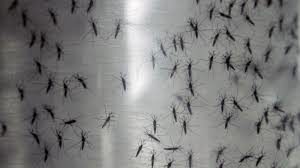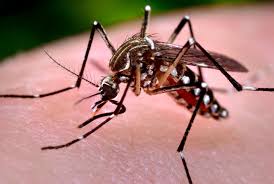By Muhammad Luqman
Before the year 1994, only vector based disease known in Pakistan was Malaria that resulted in hundreds of deaths every year. Malaria was considered as one of the six priority communicable diseases posing threat to the health of millions. Pakistan used to be grouped with Afghanistan, Somalia, Sudan and Yemen accounting for more than 95% of the total regional malaria burden. Malaria transmission in Pakistan has been traditionally. To overcome the epidemics, the city district governments and other municipal institutions carried out insecticide sprays in cities to prevent the outbreak of the disease.
This was the way, the mortality rate of Malaria-related diseases was brought down significantly. However, South Asian country, according to World Health Organization (WHO) witnessed the first confirmed outbreak of dengue fever in 1994, but a sudden rise in cases and the annual epidemic trend first occurred in Karachi in November 2005. Dengue which is an acute infectious disease of viral etiology , leads to lymphadenopathy, leucopenia, headache, biphasic fever, pain in various parts of the body, rashes, and extreme physical weakness . Dengue inflicts a significant health, economic, and social burden on populations of endemic areas. Dengue virus is transmitted to humans by the mosquito vector Aedes aegypti.
Soon after the dengue became an annual epidemic in this part of the globe , in addition to Pakistan’s central and provincial government departments, World Health Organization (WHO) came to rescue to overcome the fever caused by the dengue virus borne by the mosquito species Aedeas Egypti,
In 2010, Pakistan had its history biggest dengue fever outbreak . This time, the hot spots were Lahore and adjoining cities. This was not less than a crisis for the government led by then Punjab’s Chief Minister Shahbaz Sharif. After initial failures to combat the problem, Pakistan sought the help of Sri Lanka that had experience of fighting the Dengue epidemic for over 30 years.
Besides foreign technical assistance, the integrated pest management techniques including fumigation, larvae scouting , promotion of mosquito repellents and pesticides spray helped bring down the incidence of dengue fever in the ensuing years. However, Dengue fever reared its head about five years later in a big way. This time, it was Peshawar, the capital city of Pakistan’s north-western province of Khyber Pakhtunkhawa. The provincial government while benefitting from the experience of Punjab’s experience was ab le to overcome the epidemic. Over the last four years, this vector borne disease has been rearing its head in various parts of the country again and again. This year, Rawalpindi, the twin city of capital Islamabad has been theatre of dengue outbreak. Hundreds of residents of Rawalpindi have sofar been hospitalized.
1181 dengue patients in this month, 54 dengue patients were admitted to the three government hospitals in Rawalpindi in the last 24 hours. pic.twitter.com/A1bQYobXYG
— (Adv) Faraz Ibrahim (@faraz_kandhro) September 7, 2019
This means that pesticides alone cannot be solution to this annual problem. Especially, in a country where there is no factory producing active insecticide ingredient locally , management of the problem can not be inexpensive job. Over the last seven years, annual pesticide import bill of pesticides has risen to Rs 75billion (US $ 500 million) from Rs 30 Billion ( US $ 150 million). Despite, a big expenditure on the import of insecticides, complete eradication of dengue and other mosquito-borne diseases like malaria seems to be distant dream, necessitating to adopt some out-of-the –box solutions like genetic engineering. Pakistan can benefit from Malaysian experience that has released the Wolbachia bacteria infused mosquitoes into atmosphere in recent years to fight war against dengue.
 According to Malaysian media reports, the experiment has helped bring down the incidence of dengue virus infection in Selangor state, adjacent to the capital Kuala Lumpur by 50 to 80 percent after Wolbachia-infused mosquitoes stopped the development and replication of the dengue virus, preventing transmission to humans.
According to Malaysian media reports, the experiment has helped bring down the incidence of dengue virus infection in Selangor state, adjacent to the capital Kuala Lumpur by 50 to 80 percent after Wolbachia-infused mosquitoes stopped the development and replication of the dengue virus, preventing transmission to humans.
This is not first time, biotechnologists have developed genetically modified mosquitoes to fight diseases. In the past, British firm Oxitec developed genetically modified (GM) strains of A. aegypti via the release of insects carrying a dominant lethal (RIDL) strategy. RIDL male mosquitoes offer a resolution to many of the limitations of traditional SIT, which has resulted in reduced application of SIT in mosquitoes. The technique using RIDL mosquitoes is considered to be ecologically friendly and specific.
According to research, Wolbachia is not harmful and it does not infect humans because the size of the bacteria is too large to travel through the salivary ducts of mosquitoes and into the human bloodstream.
In the United States of America, Massachusetts Institute of Technology (MIT) has been pioneer in formulating a technology , called CRISPR gene drive, a gene editing application that represents humanity’s single best chance to eradicate malaria and other mosquito borne diseases.
CRISPR is a tool developed in the past decade that has made it dramatically easier to make precise edits to the genes of everything from viruses and bacteria to mosquitos and humans. Gene drives allow humans to change the genetic makeup of a species by changing the DNA of a few individuals that then spread the modification throughout an entire population.
Target Malaria, a British NGO, has also experimented the releasing of GMO mosquitoes in environment in the African country, Burkina Faso to overcome malaria.
In Pakistan too, a group of entomologists had claimed of using Wolbachia, a genus of bacteria, as a biological agent for the genetic modification of laboratory-reared Aedes aegypti mosquitoes back in 2016.
The researchers led by Dr. Nusrat Jahan of Government College University Lahore , had said that the technology, if adopted , would help Pakistan overcome the dengue epidemic to a great extent.
But the claim has apparently proved to be only a media stunt as no headway has been witnessed in the research.
Pakistani government has to show the ownership of the research for the development of the GMO mosquito. Otherwise, controlling dengue fever will remain a distant dream.















